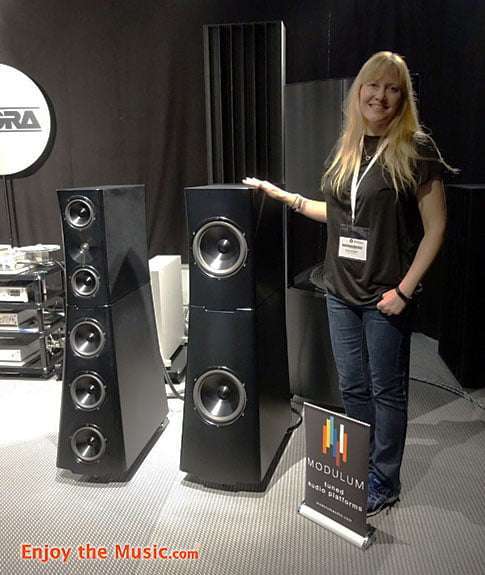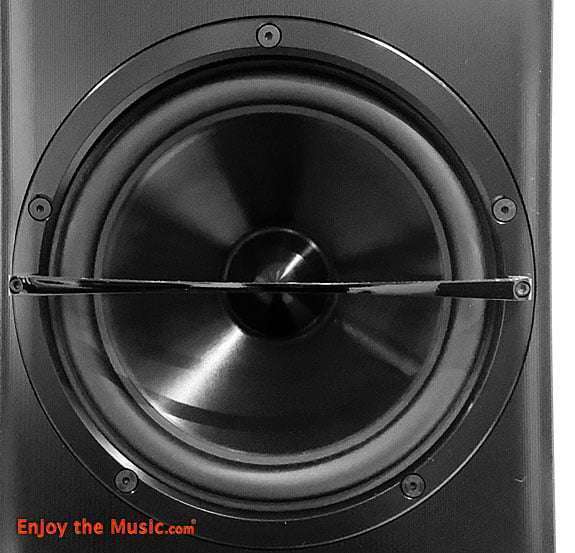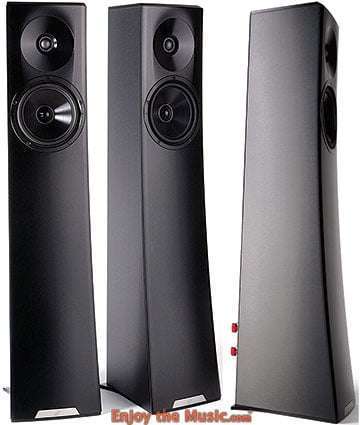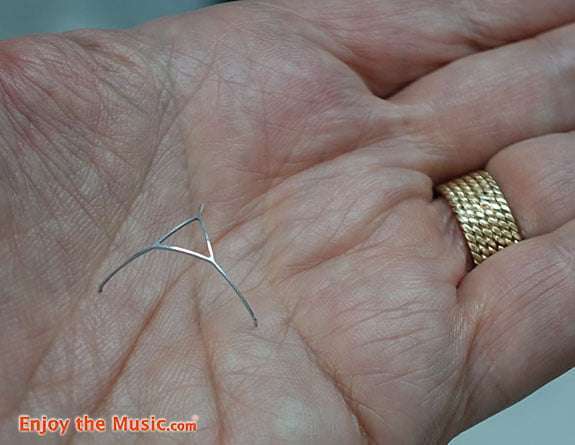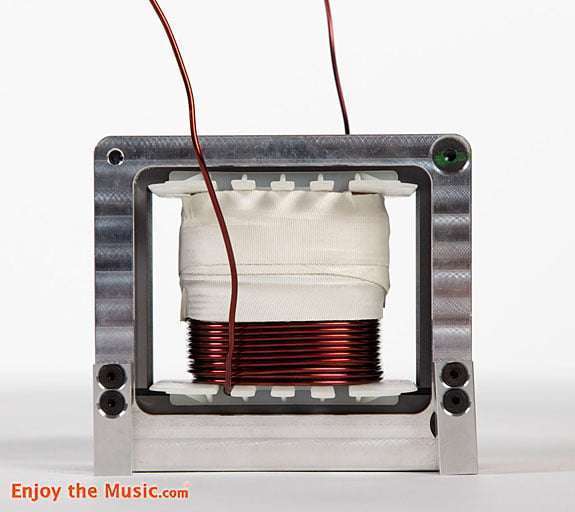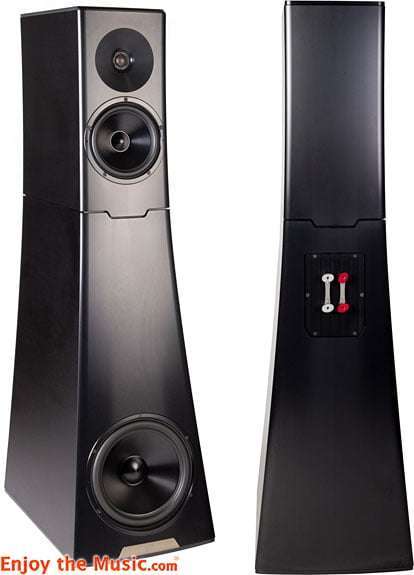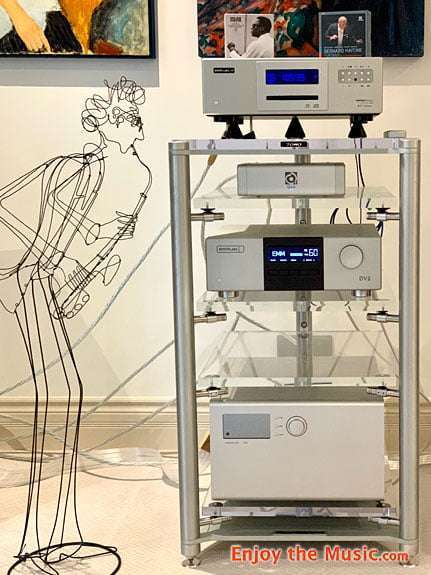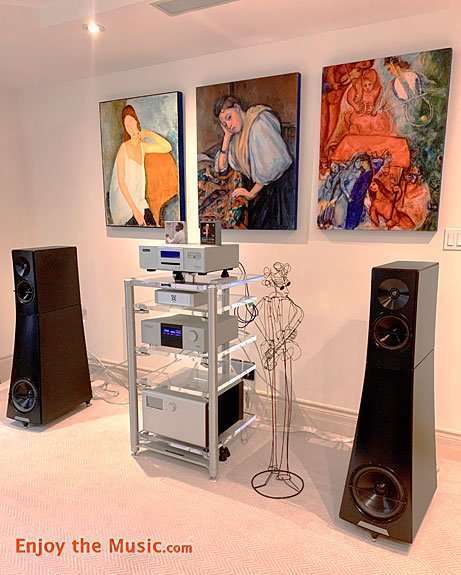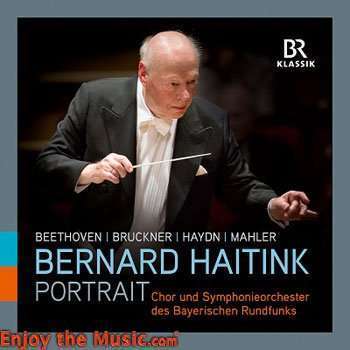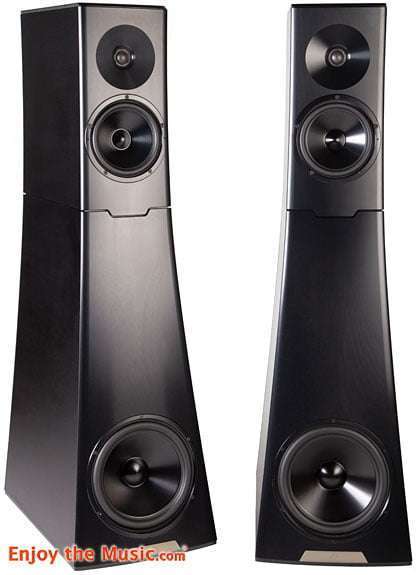The middleweight contender…
Cards on the table. I’ve owned the YG Carmel (reviewed here) and the YG Carmel 2 (reviewed here), each of which I’ve reviewed in these pages in January 2012 and July 2015 respectively. You can read them here and weep. I’m addicted to the ultra-high resolution, low distortion, lightning reflexes, dynamic range and the holographic imaging of the Carmel speakers. They are not for everyone. Due to the particular way they are constructed from billets of aircraft grade aluminum, they cost a lot of money, and due to their relatively small size, they don’t reach down all that deep. The sealed box design does provide a superbly fast accurate bass, but while the quality is high, the quantity is limited.
Today I’m going to look at the latest version of the Carmel’s bigger brother, the Hailey 2.2. Make that sister. Carmel and Hailey are the names of the two oldest children of designer Yoav Geva and his wife, Sonja, pictured here along with the even bigger Sonja speaker named after her.
Let’s take apart the 2.2 designation. The first number 2 indicates this is the second generation of Hailey speaker, while the second 2 is to show which configuration this represents in the Hailey 2 range. Hailey 2.1 is a smaller unit, basically a 2.2 without its bass module. Most Hailey 2s will be this 2.2 configuration, where the bass module and the main section come pre-attached from the factory. There are two sets of binding posts, connected if you are not bi-wiring or bi-amplifying by a solid jumper, but I replaced these with Valhalla 2 jumpers. The Hailey 2.2 may look like the Carmel 2 on steroids, but in addition to the larger two piece cabinet and an extra driver, it features some new technology to bring distortion down to unprecedented low levels.
The Hailey range shares a 7.25″ main driver (pictured above) with the Carmel but adds a 10.25″ woofer below it (pictured below), meaning the main driver operates within a narrower bandwidth. Carmel 2 has a single crossover point at 1.75kHz, while Hailey 2.2 adds a second crossover at 65Hz for the 10.25″ woofer. Carmel 2 offers usable output down to 32Hz, while Hailey 2.2 reaches down to 20Hz. This new technology not only separates the Carmel 2 from the Hailey 2.2, it is the same technology that YG Acoustics added to the Hailey 1.2 to make the Hailey 2.2, and to the Sonja 1.2 to make the Sonja 2.2.
So, what is this new technology? There are two elements – one works at the high frequencies, the other at the low end.
The High Frequencies
The first of these is the new tweeter, which YG calls the BilletDome. The already superb silk dome air cooled tweeter from the Carmel 2, Sonja 1 and Hailey 1 is limited at its highest frequencies in its linearity and accuracy by the laws of physics. It starts to break up, gently, when pushed to extremes. Some manufacturers have switched to metal hard dome tweeters (aluminum, beryllium or diamond) to extend the tweeter’s operating range, but Yoav Geva feels that hard domes such will always ring when pushed high enough, giving a brittle nature to the sound he finds unsatisfactory. Instead he set out to create a hybrid between silk and metal that would have the advantages of both and the disadvantages of neither. To cut a long story short, he eventually succeeded, but the cost and difficulty of manufacturing this tweeter made it prohibitively expensive for all but the highest end of the YG range.

It made its first appearance in the Sonja XV two tower speaker at CES in January 2017 and I loved what I heard there. Then as production yields improved it became possible to introduce it into the new Sonja 2 later that year and finally, in 2019, into the Hailey 2. It does not appear in the Carmel or the new Vantage which sits between the Carmel 2 and the Hailey 2, and it is not expected to do so in the future I am told. It would price those speakers out of the market. The form this hybrid takes is an incredibly light aluminum skeletal air frame bonded to the surface of the silk dome, adding the requisite stiffness to greatly extend its upper bandwidth power handling. Here is the airframe. You can tell from the wedding band that that is my hand. And it does this without detracting from the sweetness that the silk dome offers or significantly increasing the moving mass.
The aluminum brace is created from a billet of aircraft grade aluminum on the same CNC machines that produce the featherweight aluminum cones used in the bass and midrange drivers. Here you can see the brace in my left palm. It weighs a mere 30mg or one thousandth of an ounce yet is 14 times thicker in cross section than a typical hard dome. YG claims it is much stronger than the most exotic hard dome materials.
Low Frequencies
The second innovation is the ViseCoil bass inductor, used in the lower crossover, CNC wound in house then encased in a vise like milled structure to eliminate vibration and tighten tolerances. By this means, residual loss is reduced by 24% and linearity improved by 60% over the previous incarnation of inductors. Not only does this lead to greater control over the woofer and stronger bass impact, but it also makes the speaker a considerably easier load for an amplifier to drive, widening the range of suitable amps.
YG Acoustics Technological Innovations
ViseCoil and BilletDome are thus added to the range of unique technologies that distinguish YG speakers. Here is a list of the other technologies that you will find in all current YG speakers as well as the Hailey 1 and Sonja 1:
· DualCoherent (2002) Crossover coherent in both time and frequency domains.
· Cabinet (2004) CNC machined from aircraft grade aluminum – pressure assembled.
· FocusedElimination (2007) Pinpoint elimination of resonances and internal standing waves.
· ToroAir (2010) Leading edge mid and tweeter inductors with toroidal geometry.
· BilletCore (2011) Cone drivers machined from solid billet aluminum.
· ForgeCore (2011) Ultra-low distortion motor system for the tweeter.
Now we can add:
· ViseCoil (2015) Low loss bass inductor.
· BilletDome (2016) Hybrid Aluminum Silk tweeter dome.
Note that of these eight unique technologies, six relate to the CNC machining of specialized metal parts. A much more expensive technique than casting, stamping or laser cutting, but one which Yoav Geva believes has benefits in terms of 3D geometry and strong light stress-fee components that have significant sonic benefits. YG Acoustics speakers are expensive in absolute terms and also pound for pound, inch for inch. We’d better be hearing those benefits, otherwise this is just an academic exercise.
The Reference System
To give a fair audition to an ambitious product like this, you clearly need a reference level system to accompany it, and a well-designed listening space. I could not have done it full justice before I built myself a new sound room, and you can read all about that here. First you need a good rack – my choice is the Tomo from Canadian manufacturer Krolo. Then you need all sorts of cables. I use Nordost Valhalla 2 throughout, apart from the EMMLink glass cable that connects my transport (EMM Labs XDS1, reviewed here) to the DAC (EMM Labs DV2, reviewed here). The DV2 has a variable output for direct connection to the power amp, a Soulution 511 (review forthcoming). All these components are very wide bandwidth, high resolution and very low distortion, at or near the very top of their field.
It’s Showtime
I have had the Hailey in the system since May, and YG Acoustics’ Dick Diamond flew in to install them and position them optimally. Since then they’ve been paired with all sorts of amps, preamps and DACs, but I’ve had a lot of time to listen to them with the reference rig and I’m very happy with what I’m hearing. The outstanding characteristic is a sound so natural and spacious, you don’t think about the equipment at all, you can simply relax and enjoy the music. It was months before I even thought to pick up pen and paper to take listening notes. Those notes are quite brief too, especially compared to the ones I wrote for other speaker reviews in the same reference system but with different speakers. There is so little to criticize here, and those complaints are mostly about the recording itself and not the speaker.
There are some who say digital recordings are inherently flawed (for music is analog) or that only tube amps can convey the warmth and presence of live instruments. At the opening of Gershman Audio’s new reference listening room in Toronto last week, one audience member chose to pontificate on both these themes at great length. I will agree that some digital recordings are inferior, especially with limited sampling depth and frequencies.
I will also stipulate that there are some great tube amps out there, while many silicon amps are thin and unmusical even if their distortion measurements are vanishing low. But my answer to this gentleman, and to many others who support him, is that you simply haven’t heard digital done right, and you haven’t heard silicon done right. If you were listening with me to Haitink’s new live recording of Mahler’s Third, included in the wonderful box set Haitink Portrait, you might very well retract everything you said. This is the real deal and it’s not an analog recording and there’s no tube involved in the replay chain. It’s not even Hi-Res Music – just plain vanilla Redbook CD.
OK. Let’s dive into this recording. It was made at two concerts in Munich on the 16th and 17th of October 2016, where Bernard Haitink – then a sprightly 87 years of age – conducted the Symphonieorchestra des Bayerischen Radfunks in the greatest performance of this massive and complex work that I have ever heard [BR-Klassics 900174-08/9]. This is not a bombastic performance as some might relish, but an exquisitely balanced performance that reveals its message over the whole 101 minute span. Music reviews may be out of place here, but the sonics are especially relevant.
Why? Because I don’t think I’ve ever heard a CD of symphonic music that is so totally involving. We hear the full orchestra and we hear individual instruments with a clarity and color that connect us directly to Mahler himself. What is he telling us? What pain is his in? Not how low can this speaker go, or can I locate the first violins from the second. Through the YG Hailey 2.2 there is no sense of strain at any volume. The music just emerges in living color. It is by turns angry, explosive and sorrowful. The midrange’s precise definition extends all the way down into the low end which is both colorful and impactful. The brass in particular is so very present and realistic. Mahler’s writing for brass has never been surpassed.
Enjoy The Music When Enjoy the Music.com‘s Creative Director, Steven R. Rochlin, named this publication “Enjoy the Music” rather than something else, he just nailed it. It’s all about the pleasure, pain, sorrow, anger, angst, terror, exuberance and thrill of great music in all its forms. |
I always pay the most attention to whether the music draws me in, casts a spell over me, makes my feet tap, my body sway and keeps my fingers off the remote. And boy oh boy, this does that as few setups I have ever heard at all the various shows I’ve covered over the years. I’ve been really impressed by the TAD room at CES, the Nagra room and The PMC Atmos Miles Davis demo at the Munich High End show, KEF’s Muon playing in Toronto and a few other systems, often far more expensive than this.
I know what I like – I like music played by top notch musicians in first class venues, and I like it when I hear something that comes close enough to that to let me picture myself there. I’m always looking for that. It’s all about the music. Whenever I enjoy the music, you’re gonna hear about it.
So much for large scale orchestral music. Moving to an SACD disc of Bach Double and Triple Concertos led by Rachel Podger [Channel Classics CCS SA 34113] the Hailey’s improve on the already excellent Proac Response D2R speakers, which I described as sweet and detailed, unfatiguing, well balanced, easy to hear all the instruments in the mix. Now it is easier to hear and follow the bass line, and the dynamics and image scale are larger. The attack is stronger and instrumental color richer. In other words, its now closer to the sound in the hall. And on a smaller scale again, Haydn’s String Quartets opus 20, performed on original instruments by the Quatuor Mosaďques [Astree E8786] shows similar gains over the very strong performance offered by the ProAc Response D2R. Not only is there a greater sense of ease to the music, but the lower strings have more texture and sharper articulation bring out more power in the music.
So, we know now the Hailey does a great job on classical music of all shapes and sizes. Let’s push some Jazz through it and see how it responds. Piano is the toughest challenge, so I’ll start with the Bill Evans Trio on the SACD album Portrait in Jazz [Riverside RISA 1162 6]. There are big gains here over both the ProAc Response D2R (reviewed here) and the YG Carmel. The D2R does spectacularly well here. My notes say it really sounds like the trio is in the room, except that the deep bass is not perfectly tight or dynamic. The YG Carmel does even better, with a very dynamic tight bass, but one which does not dig all that deep. The YG Hailey 2.2 brings the additional body and precision into the bass that we saw it do in classical music. It’s simply wonderful to listen to now.
At this point I did a little experiment. Since I had such a transparent system in front of me, I tried listening to DSD layer next to the Redbook layer on Portraits in Jazz. Shakespeare put these words into the mouth of the ghost of Hamlet’s father: “O Hamlet, What a falling off was there!” These words are just perfect to describe what I experienced here. |
Switching from DSD to Redbook when using the Proac Response D2R, the CD layer has a fatter bass, the piano has less overtones and sounds less realistic, while the percussion takes the biggest hit – it is still fast but not so realistic. Overall it is less relaxing, less resolving of fine detail and the image is not so strong.
Making the same switch on the Hailey 2.2 the differences are even more marked. The piano sound has much less realism, the bass is looser and less well defined, leading edges are homogenized and percussion loses its harmonic richness. On this particular disc, I can safely say the DSD layer beats the CD layer all ends up.
But this is just a random sample of one. I doubt that it is typical. After all, as evidenced by the Mahler recording from Haitink, there are some staggeringly great sounding CDs out there. If I have time later, I will repeat the test on a whole bunch of recordings.
Now on to Bela Fleck and the Marcus Roberts Trio [Rounder 11661 9142 2], a disc that features one of my favorite drummers, Jason Marsalis. This was one of the few discs that the ProAc Response D2R had some trouble with, maybe because of its strong bass content. The YG Hailey 2.2 has no such issues. Its fast, precise and extended deep bass brings this recording to life. The image snaps into a coherent focus. It seems totally uncompressed, with huge dynamics and a large and stable image.
Portrait in Jazz by the Bill Evans Trio [Riverside RISA 1162-6] brings us a studio recording from December 1959 in excellent SACD sound. The Response D2R had done a great job here, perfect on the delicate percussion of Paul Motian and bringing great realism to the piano of Bill Evans. And on this disc, Scott LaFaro’s bass was comfortably served up by the little speaker. How could the Hailey 2.2 beat this, I wondered at the time. I found the bigger YG brought all the same qualities to the party, but each one strengthened. The instruments have more body to them, especially LaFaro’s bass, the image is larger and the music sounds more relaxed. Just wonderful. This is no knock on the Response D2R. I stand by my earlier findings. It just shows you how exceptional the Hailey 2.2 is to even outshine the Response D2R on music it was built to play.
Eric Dolphy’s Out to Lunch [Blue Note RVG Edition 724349879324] may not be your kind of Jazz but I’m enormously impressed by the quality of this CD, remastered in 1998 by the original engineer, Rudy Van Gelder. And I’ve come around to this music, which initially had little appeal to me. In fact, this I music that demands and rewards the highest quality reproduction. The ProAc Response D2R was a speaker that did a great job opening this up. From top to bottom, this was rewarding listening. Lots of detail, lovely instrumental color, superb attack – the marks of a superb tweeter. The bass too was fast and pitch accurate. But the YG Hailey 2.2 gives us more space around the instruments, more subtlety in the instrumental color and a prodigious transient snap and dynamic range that elevates the experience still further. This recording highlights some of the best features of the Hailey 2.2. The integration of the various instrumentalists into a coherent whole.
Consistent speed and articulation across all frequencies due to the magically fast woofer response, and superb linearity from drivers, crossover and cabinet that refuse to compress under stress – these are the qualities which taken together turn a recording into a performance. These are not the only speakers that can do this, but there are very few that can do so across the full audio bandwidth – most are compromised in the bass and many in the treble. Having this incredible accuracy in the bass lifts the whole performance, providing a solid springboard for the midrange and top end to float, yielding superb realism to the percussion.
All for You, a tribute to Nat King Cole, is my favorite Diana Krall recording [Justin Time JTR 8458-2]. It’s a heady mix of ballads like “Boulevard of Broken Dreams”, novelty songs like “Hit That Jive Jack” and straight jazz like “If I Had You”. Krall’s voice comes across with such richness here, matching the full and beautiful piano tone. The bass has power, snap and articulation galore. All this in a wide and deep space with pinpoint location accuracy. I just don’t know how it gets any better than this. Actually this isn’t really a tough test – most speakers give their best here. But I have yet to hear it better.
Keb’ Mo’ is a great album, made even better in the limited edition SACD version [MoFi UDSACD 2054]. The YG Hailey 2.2 digs deep and cleanly to animate Robert Johnson’s classic “Come on in my Kitchen”. Where lesser speakers struggle with the strong tight bass, the YG keeps the rhythms tight and punchy. The image has significant depth as well as width so it seems you are right there in the club with ‘Keb. Shout outs on the album cover go to Tim de Paravicini, Ed Meitner, Pass Labs, Eggleston Works, Sound Application, Clearaudio, STAX, Linn and Z-Systems. No wonder it all sounds so great!
Finally, the great Paul Simon plays “Wristband” for listeners to Prairie Home Companion on his final album Stranger to Stranger [Concord 0888072398030]. This is another track that the ProAc Response D2R played superbly well. The Hailey 2.2 provides extra detail, particularly in low level percussion contributions, and throws a larger image. The standout feature is the ability to hear everything in the mix, even when a louder instrument or voice would mask such details on lesser speakers.
Is The YG Acoustics Hailey 2.2 Perfect?
It’s a valid question. I tried but failed to trip it up using some really tough discs, far more than I’ve listed here. I tried massive symphonic forces, solo piano, vocals from Diana Krall to the B Minor Mass, Jazz, Klezmer, Bob Dylan, The Beatles, Queen, Afro Cuban, the lot. The Hailey 2.2 sounds just like the Carmel 2, but bigger, stronger, more resolving, throwing a wider, deeper image in which music emerges more freely still. Crazy to think how this is just midrange form YG Acoustics.
I tried to compare it to a new speaker three times as expensive. Again, I could not find a single track where I preferred it to the Hailey.
But no, it’s not perfect. The $46,800 price tag alone is going to scare away most audiophiles. Even if we can agree this is the best value speaker in the YG Acoustics’ range, and you really are getting a lot of performance for your dollar. I would also prefer a higher sensitivity and an 8 Ohm load, to make it easier to partner. And its look is a little forbidding. But I simply couldn’t fault its musical performance – the best I’ve heard.
There are other speakers that look more elegant – Sonus Faber and Wilson Benesch for a start. There are other speakers that have greater efficiency and maximum output level – like Wilson Audio Alexia. Some go deeper – The YG Sonja for one. And some will say that a full range electrostatic panel has no peer. I would say that YG comes closer to the electrostatic purity than any dynamic speaker I’ve heard.
Of course, there are no perfect speakers. Only horses for courses. This one, by the way, is just right for my course, speaking both as a reviewer looking for absolute accuracy and a music lover who wants to recreate the original performance. So, Hailey 2.2 is my new reference speaker. It’s fills my listening room with music and gives all my recordings a tune up. It builds on all the strengths of the Carmel 2 and the Hailey 1.2 to breathe even more life into the music. In my opinion, every high end manufacturer should buy a pair to see if they can exceed its reference-level musicality or match it for less money. It’s that good.
Interview With Yoav Geva
December 2019
Phil Gold: YG Acoustics has been introducing quite a number of new products over the past year. In particular, there is the new three-way Vantage speaker priced between the Carmel 2 and the Hailey 2.2. Can you explain the difference between the Hailey and the Vantage, and what kind of listener each one is aimed at?
Yoav Geva: Vantage offers most of the technologies of Hailey 2, with two main exceptions that allow us to offer Vantage at a price that’s within reach for a far wider group of discerning audiophiles:
· Hailey 2 uses YG Acoustics’ brand-new BilletDome tweeter, which has until now only been offered in our flagship Sonja XV and Sonja 2 speakers. Vantage uses the excellent but “not as crazy-expensive” ForgeCore tweeter, which is currently used in Carmel 2, and was previously featured in the first-generation Sonja and Hailey speakers.
· Hailey 2 uses a 10.25″ (26 cm) diameter woofer, which plays all the way down to 20 Hz but requires a large cabinet. Vantage uses a 9″ (22.5 cm) diameter woofer, which offers the exact same technology, plays down to 26 Hz, and can be used in a smaller cabinet.
Both speakers offer our other key technologies: BilletCore cone-drivers, a ForgeCore tweeter-motor, a DualCoherent crossover with brand-new ViseCoil bass inductors and ToroAir mid-high inductors, and a fully CNC-machined cabinet optimized using our FocusedElimination technology.
Phil Gold: If the ear cannot hear beyond say 15kHz, why do you find it necessary to introduce the new BilletDome tweeter? Does it have any audible effect at the lower end of the range? Does it require any changes in the crossover from the Hailey 1.2?
Yoav Geva: Whilemany adults can’t hear pure sine-waves above 15 kHz, it’s possible to hear them as part of a more complex signal. To illustrate this, at 2:16 into the following video a 6 kHz sinewave is compared with a 6 kHz square-wave. All of the differences are at 18 kHz and above, yet despite YouTube’s limited resolution, many adults can still hear a difference between the two. There’s also more technical answer for the “gearheads” among your readers: the Hilbert-Bode transform formula, which defines the relationship between phase and SPL in minimum-phase systems, proves that the SPL at frequencies above and below the audio band affects phase within the audio band. In lay terms, this means that a tweeter that extends well into ultrasonic frequencies will have less phase shift within the audio band.
Phil Gold: Can you explain the use of the ViseCoil inductors in the Hailey 2.2. Again, how does it affect the crossover design, and how does it make the Hailey easier to drive?
Yoav Geva: ViseCoil is our newest key technology, involving bass crossover-inductors that are also optimized mechanically, not just electrically (which is already commonplace). By encasing inductors in a CNC-machined vise-like structure, along with some other construction-details, we’ve been able to achieve much lower vibration (24% lower residual loss) vs off-the-shelf coils, and improve linearity by 60%. Since speakers are passive devices, any energy that’s “wasted” on making the inductors vibrate would come directly from the music signal. Thus, by reducing vibration there’s less waste, and more of the power generated by the partnering amp actually finds its way to the driver. In more technical terms, we are able to preserve more of the partnering amp’s damping-factor.
Phil Gold: Have other manufacturers approached you to license any of YG’s proprietary technological advances? Would you consider licensing them to potential competitors?
Yoav Geva: We have been approached by numerous manufacturers over the years and have done business with six of them. One of the six is a “very indirect” competitor, four others are audio companies that don’t make speakers, and the final company is only anecdotally related to audio. In general, we welcome such requests, but are quite picky because we must trust the quality of the resulting product.
Phil Gold: Warmth is often associated with even order distortions. How come your speakers sound less and less sterile, more and more musical, while distortions are being reduced with every technological innovation? And how do they sound more and more relaxed even as the impulse response becomes faster, square wave reproduction more perfect? I might have expected faster transients to lead to a more edgy sound.
Yoav Geva: You’re correctly pointing out a common misconception in the industry. True warmth should only be associated with the natural sound of a live musical performance, rather than with any type of distortion. Anything artificially added to the sound always induces listening-fatigue in the long run. I do, thus, agree with the second part of the question – the closer we get to live sound, the more relaxed the presentation.
Phil Gold: The sonic advantages of a sealed box construction are quite clear to me, with a particular bonus being they are so easy to position, being less sensitive to room boundaries. Yet very few manufacturers take this path. What are the disadvantages of a closed box and how do you overcome them?
Yoav Geva: To achieve the same bandwidth as a vented box, a sealed design mandates a larger cabinet, a more rigid cone, and somewhat lower sensitivity. If all three are carefully implemented, a sealed box will perform far better than any port. Beyond the advantages that you mentioned, first and foremost all of the sound in a sealed design comes out of the driver in real-time. In contrast, in a vented box sound takes time to move from the back of the driver, through the enclosure, and out of the port. The resulting time-smear is substantial and easily audible. Thus, all three challenges that I mentioned are worthwhile. However, there is a downside – price. A larger cabinet is more expensive to manufacture, as is a rigid cone. I don’t consider the somewhat lower sensitivity as much of an issue anymore, though, because the extra amplifier-power required is quite modest in today’s standards.
Phil Gold: There are some amazing, relatively inexpensive, low powered amplifiers in the market today, such as the Pass Labs XA25 or any number of SET tube amps. Your speakers have over time become less amplifier fussy but the Hailey 2.2 still presents a 4 ohm load with only an 87dB efficiency. Will we ever see a YG Acoustics speaker designed specifically for smaller amplifiers such as these?
Yoav Geva: When I design a speaker, I try to make sure that it can be reasonably driven by 60 good Watts (with a current-capable amp 45 Watts are usually also sufficient). I am comfortable with maintaining this goal, because from my experience, that is “as flexible as I can go” without compromising sonic performance. While you are correct that there are some excellent low-powered amps out there, and they enjoy a loyal (and highly vocal) following, in practice that segment represents a very small portion of the market. As a side-note, while the Pass XA25 indeed may be underpowered for my designs, most larger models in the Pass Labs’ XA “point 8” series easily meet or exceed YG Acoustics’ power-requirements, and are excellent choices for driving our speakers. Here’s an easy way to illustrate why speaker-designers shouldn’t develop “tunnel-vision” by catering to each and every product out there – a low-powered amp requires a highly sensitive speaker, which in turn mandates very lightweight drivers. The stiffness of a driver-cone is roughly proportional to its thickness cubed, i.e. reducing cone-thickness in half to save weight could make it eight times less stiff. This might cause the driver to flex and distort. YG Acoustics, in contrast, optimizes drivers for their strength-to-weight ratio, not just for weight, which is a better-balanced design approach that produces lower-distortion speakers.
Phil Gold: Besides BilletDome and ViseCoil, are there other changes between the Hailey 1.2 and the Hailey 2.2?
Yoav Geva: Yes, but the remaining changes are “evolutionary” rather than “revolutionary”: further optimization of the bass cabinet’s internal bracing, a slight improvement of the midrange-crossover etc. The major improvements are, as you correctly noted, the new BilletDome tweeter and ViseCoil bass-inductors.
Phil Gold: The Sonja 2 sits above the Hailey 2 in the YG Acoustics range. How does Sonja differ from the Hailey? Is it simply a Hailey for larger spaces?
Yoav Geva: Hailey 2 was designed to offer as much as possible of Sonja 2’s performance, at under two thirds of the price. The majority of features are consistent, but there are some differences: Sonja 2 uses a “box within a box” two-layer construction of CNC-machined aluminum plates that are up to 45 mm (1.75″) thick, whereas Hailey 2 uses a single-layer construction (of the same material-quality) up to 35 mm (1.375″) thick. This difference in complexity can be seen when comparing weights – while Sonja 2.2 and Hailey 2.2 are overall similarly-sized, the former weighs over 70% more than the latter. Additional differences include dual smaller (and thus by definition more rigid) midrange-drivers in Sonja 2 versus a single larger mid in Hailey 2, and in Sonja 2 the crossovers have their own separate compartment within the enclosure.
Phil Gold: Is YG Acoustics gearing up for increased production with the recent expansion in its product line?
Yoav Geva: Yes. We have recently added a seventh CNC to the factory, which was made by the high-end machine-builder DMG Mori Seiki in their new U.S.A.-based factory. At this time, our factory contains four metal-cutting CNC machines, a polishing/grinding CNC and two coil-winding CNCs. I would like to take this opportunity to cordially invite your readers to visit us for a factory tour. We’re located in Arvada Colorado, about 10 minutes from downtown Denver and 25 minutes from Denver International Airport.
Phil Gold: YG speakers are made from aluminum with no paper or wood components. Has this led to higher reliability?
Yoav Geva: Yes, but only in rare cases of water-damage. Otherwise, I believe that a reliable product can also be made of traditional materials. The use of CNC-machined aluminum, however, has definitely led to much higher precision, and thus a better-optimized design. We are able to achieve tolerances in metal that cannot be attained using traditional materials and methods.
Phil Gold: You have moved into a new role in the organization now. Can you explain what difference that makes in the work you are doing?
Yoav Geva: In 2017, YG Acoustics grew too large for a single owner-president, so I sold the company and remained on board as a team-member, with more time to focus on my true passion, which is the technical/engineering side of the business. For the past 2+ years, my title has been Senior Vice President – Chief Engineering Officer. I retain authority over product-quality, but no longer deal with duties that are not of a technical nature, such as sales, payroll, management etc. This is the main reason that you’re seeing more new products launched by YG Acoustics recently – there’s simply more of my time available to create new and exciting speakers and technologies now and in the future.
Phil Gold: It looks like you’ve run out of family members to name your speakers after. Does that mean we can expect more generic names like Vantage or are their plans to grow the family?
Yoav Geva: There are no plans to grow the family, I’m very happy with my amazing and beautiful family – Sonja (wife), Hailey (daughter) and Carmel (son). However, regardless, since 2017 the naming of products is handled by management and marketing, because it’s not of a technical nature. I’d much rather focus my work on how a product performs than on its name….
Specifications
Type: Solid-state integrated digital-to-analog converter
DG Acoustics Hailey 2.2
Frequency Response: +/-1 dB in the audio band
Frequency Range: From 20 Hz to above 40 kHz
Phase: +/-5° relative phase throughout entire overlap
Crossover: DualCoherent at 65 Hz and 1.75 kHz.
Cross-talk: ToroAir Inductors eliminate cross-talk
Mid-Woofer: 7.25″ BilletCore ultra-high-rigidity
Woofer: 10.25″ BilletCore ultra-high-rigidity
Tweeter: BilletDome ultra-low distortion, ForgeCore
Sensitivity: 87dB/W/m anechoic
Impedance: 4 Ohm nominal, 3 Ohm minimum
Dimensions: 48″ x 13″ x 21″ (HxWxD)
Finish: Black
Warranty: Five year limited warranty
Manufactured In USA
Weight: 167 lbs. each
Price: $46,800
Company Information
YG Acoustics
4941 Alison Street
Unit 10
Arvada, Colorado 80002
Voice: (801) 726-3887
E-mail: info@yg-acoustics.com
Website: www.YGAcoustics.com



